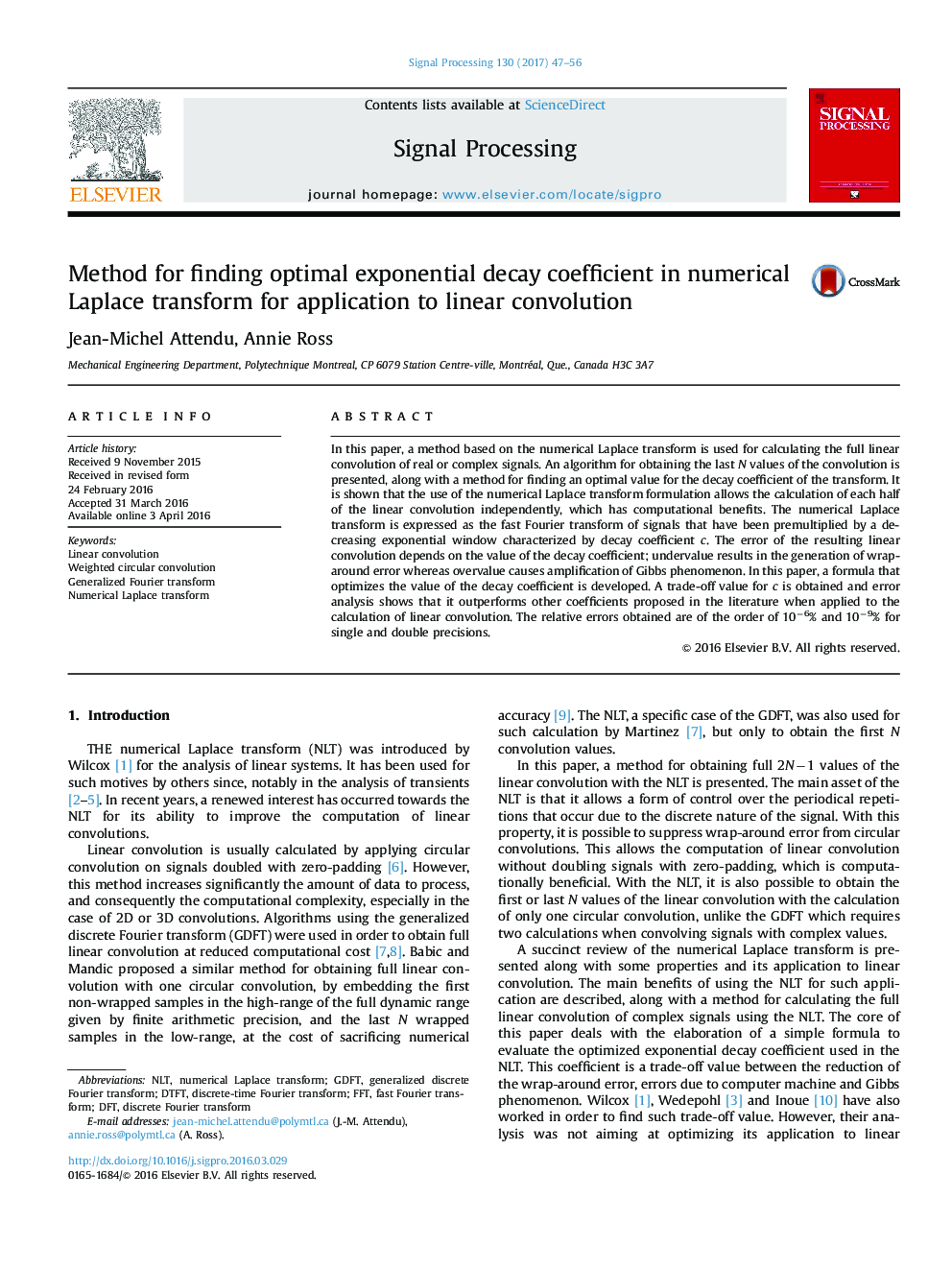| کد مقاله | کد نشریه | سال انتشار | مقاله انگلیسی | نسخه تمام متن |
|---|---|---|---|---|
| 566236 | 1451937 | 2017 | 10 صفحه PDF | دانلود رایگان |
• The NLT is used for the calculation of the full linear convolution.
• The computational advantages are investigated for such calculation.
• A formula for optimizing the decay coefficient of the NLT is proposed.
• The coefficient is a trade-off value between wrap-around and Gibbs errors.
• Relative errors with the proposed coefficients are in the order of 10e−6 to 10e−9.
In this paper, a method based on the numerical Laplace transform is used for calculating the full linear convolution of real or complex signals. An algorithm for obtaining the last N values of the convolution is presented, along with a method for finding an optimal value for the decay coefficient of the transform. It is shown that the use of the numerical Laplace transform formulation allows the calculation of each half of the linear convolution independently, which has computational benefits. The numerical Laplace transform is expressed as the fast Fourier transform of signals that have been premultiplied by a decreasing exponential window characterized by decay coefficient c. The error of the resulting linear convolution depends on the value of the decay coefficient; undervalue results in the generation of wrap-around error whereas overvalue causes amplification of Gibbs phenomenon. In this paper, a formula that optimizes the value of the decay coefficient is developed. A trade-off value for c is obtained and error analysis shows that it outperforms other coefficients proposed in the literature when applied to the calculation of linear convolution. The relative errors obtained are of the order of 10−6% and 10−9% for single and double precisions.
Journal: Signal Processing - Volume 130, January 2017, Pages 47–56
